Scientific name Ichneumonoidea Rank Superfamily | ||
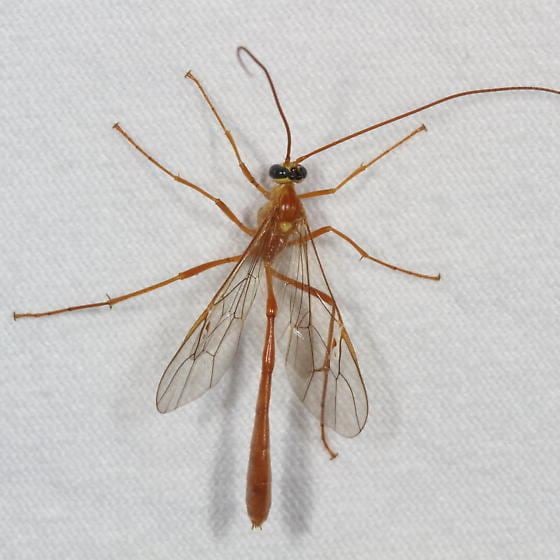 | ||
Lower classifications Ichneumon wasps, Braconidae | ||
Ichneumonoidea
The Ichneumonoidea are insects classified in the hymenopteran suborder Apocrita. The superfamily is made up of the ichneumon wasps (sometimes inaccurately called "ichneumon flies"); family Ichneumonidae and the braconids (family Braconidae). Like other parasitoid wasps, they were long placed in the "Parasitica", variously considered as an infraorder or an unranked clade, but not a monophyletic group.
Contents
- Ichneumonoidea
- Parasitoid wasps id requested on three species ichneumonoidea
- Etymology
- Description
- Braconidae
- Ichneumonidae
- Parasitic life cycle
- References
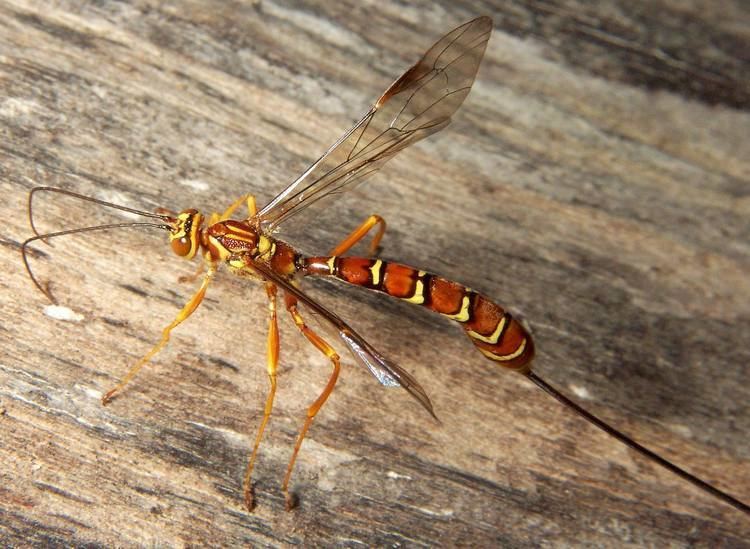
Parasitoid wasps id requested on three species ichneumonoidea
Etymology
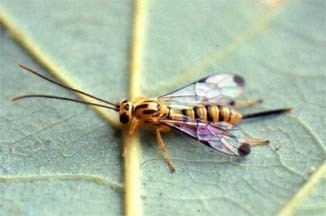
The name is derived from Latin 'ichneumon', from Ancient Greek ἰχνεύμων (ikhneúmōn, "tracker"), from ἴχνος (íkhnos, "track, footstep"). The name is shared with the Egyptian mongoose, Herpestes ichneumon.
Description
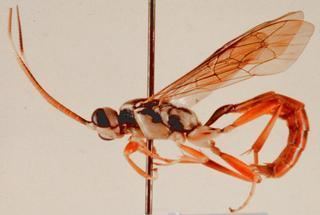
The superfamily Ichneumonoidea has been estimated to contain well over 80,000 different species. The ichneumon wasps are more familiar to non-entomologists, being larger and about three times as diverse as the braconids.
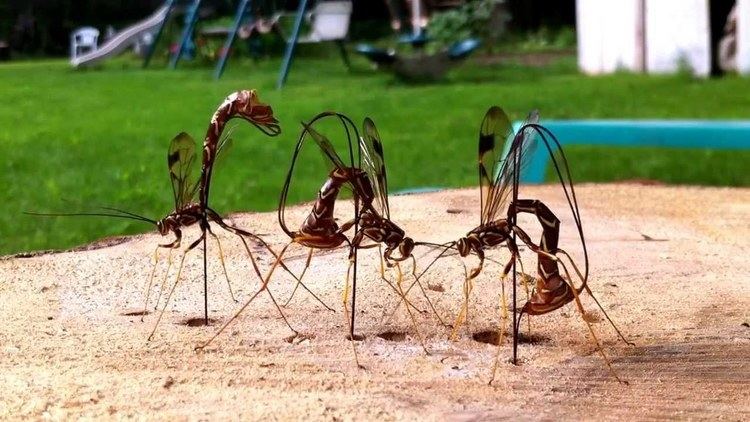
They are solitary insects, and most are parasitoids; the larvae feed on or in another insect until it finally dies. Being in the same order, ichneumons are closely related to other hymenopterans, such as ants and bees.
Members of the family Ichneumonidae are usually larger than members of the Braconidae, and are distinguished primarily by details of wing venation. Many species in both families use polydnaviruses to suppress the immune systems of their host insects.
Ichneumon wasp species are highly diverse, ranging from 3 to 130 mm (0.12 to 5.12 in) long. Most are slender, with the females of many species (particularly in the genus Megarhyssa) having extremely long ovipositors for laying eggs.
Braconidae
Most are brownish or black, not brightly colored. The family is cosmopolitan. They also have a wide range of hosts that they parasitize. Some species of Braconids pupate in silken cocoons on the outside of their dead host. Wing venation: Only one recurrent vein, or no recurrent veins.
Ichneumonidae
Ichneumonids vary greatly in size and their color varies from brightly colored yellow to uniform black. The family is cosmopolitan. Most are very specific in the species of the host they parasitize. Wing venation: Two recurrent veins.
Parasitic life cycle
The female finds a host and lays an egg on, near, or inside the host's body. Upon hatching, the larval ichneumon feeds either externally or internally, killing the host when it is ready to pupate. Despite looking formidable, the ovipositor does not deliver a sting like many wasps or bees. It can be used by the wasps to bore into and lay eggs inside rotten wood.
Some members use many different insects as hosts; others are very specific in host choice. Various ichneumons are used commercially as biological control agents in controlling horticultural pests such as flies or beetles.
An example is the parasitic wasp Ichneumon eumerus, which parasitizes the butterfly Phengaris rebeli. The adult wasp locates the P. rebeli by searching for Myrmica ants' nests, the nests that the P. rebeli parasitize as larvae in order to get nutrition. They only enter the Myrmica ants' nests which contain the P. rebeli caterpillar.
Once inside, they oviposit their eggs directly inside the bodies of these caterpillars and manage to escape the nest as they release a chemical that causes the worker ants to fight each other rather than the intruder wasp. Once the wasps' eggs hatch from the caterpillar's body, the offspring consume the dead caterpillar.
